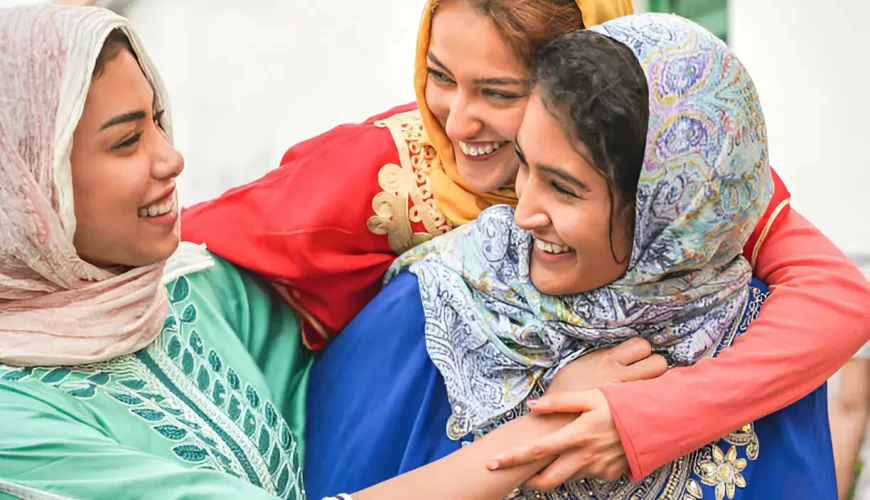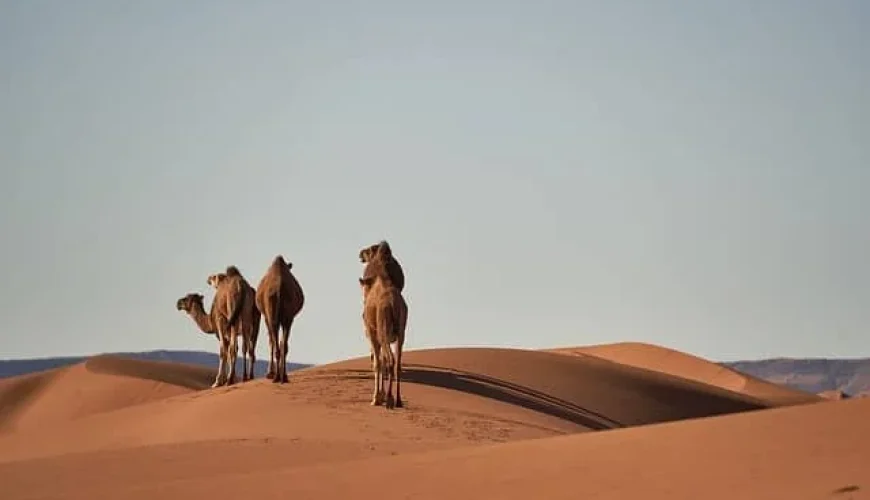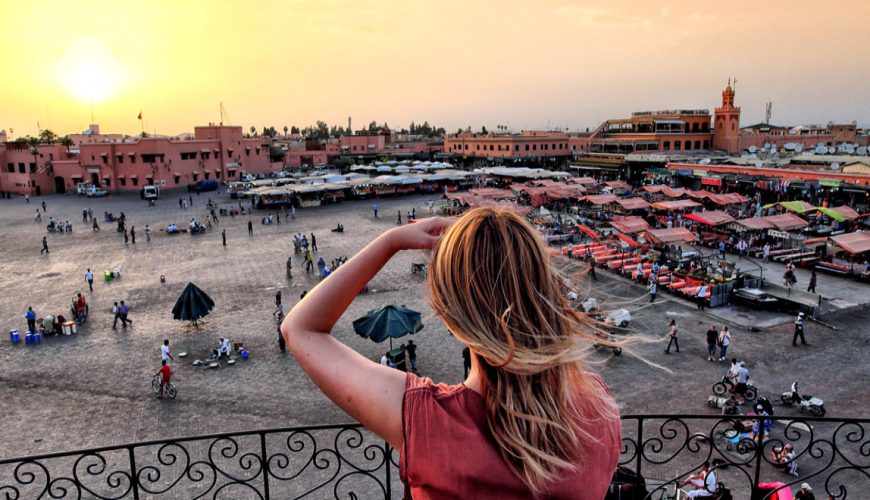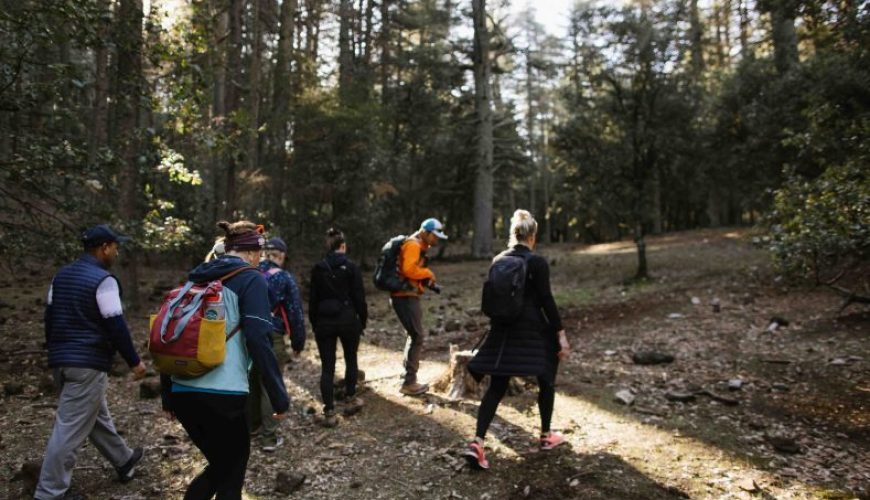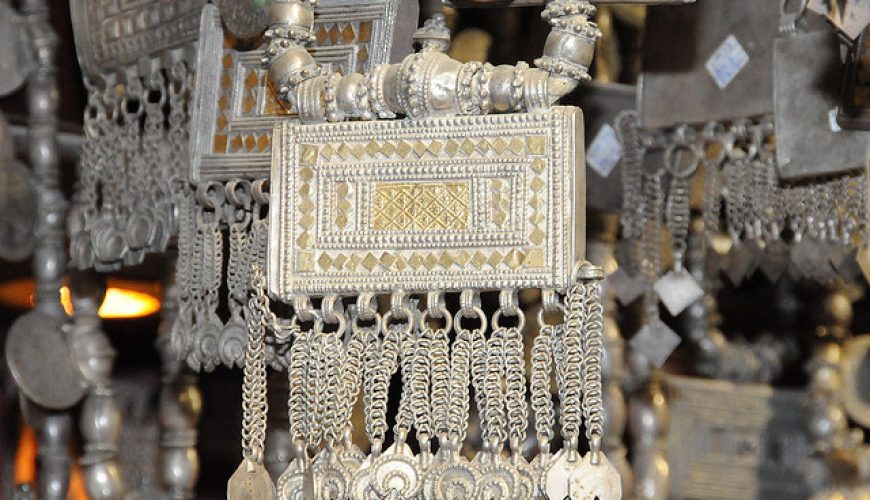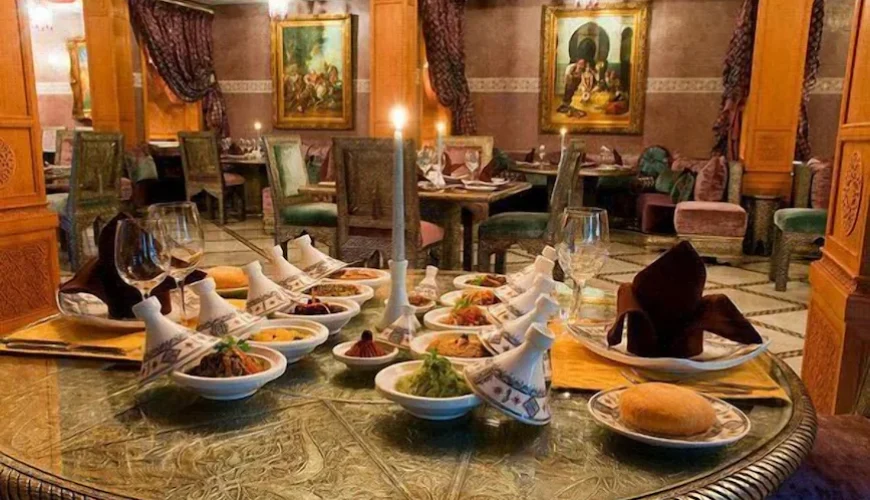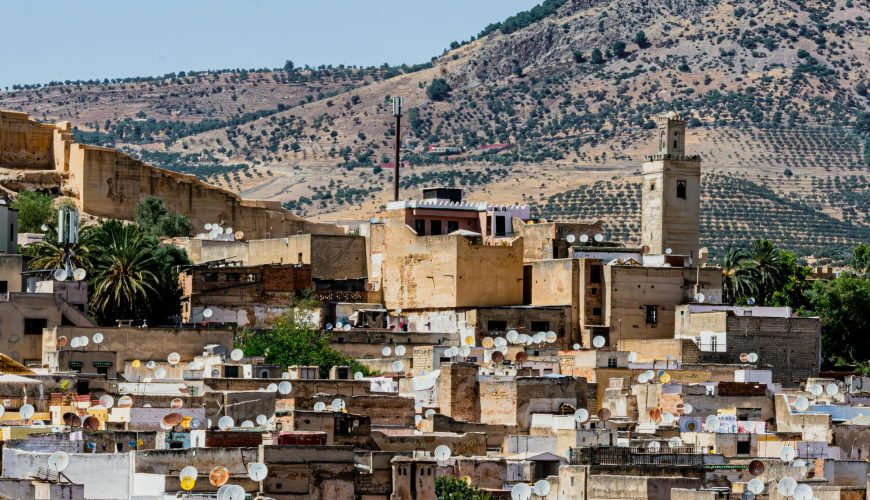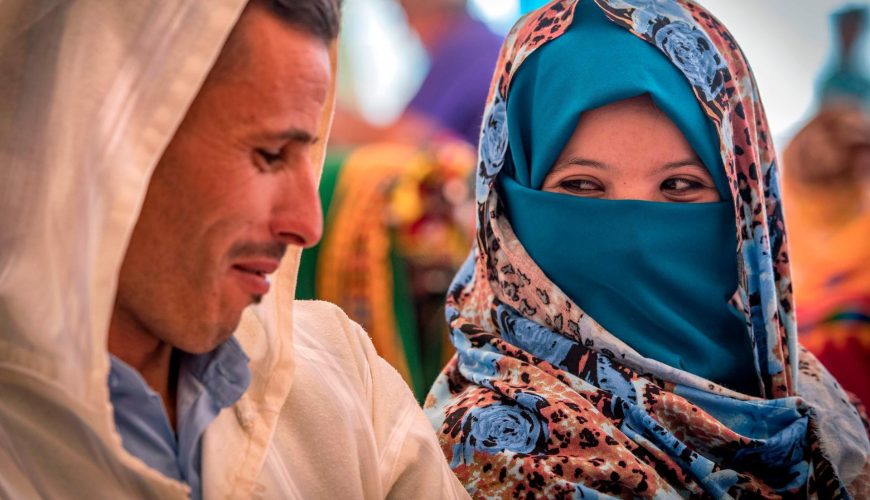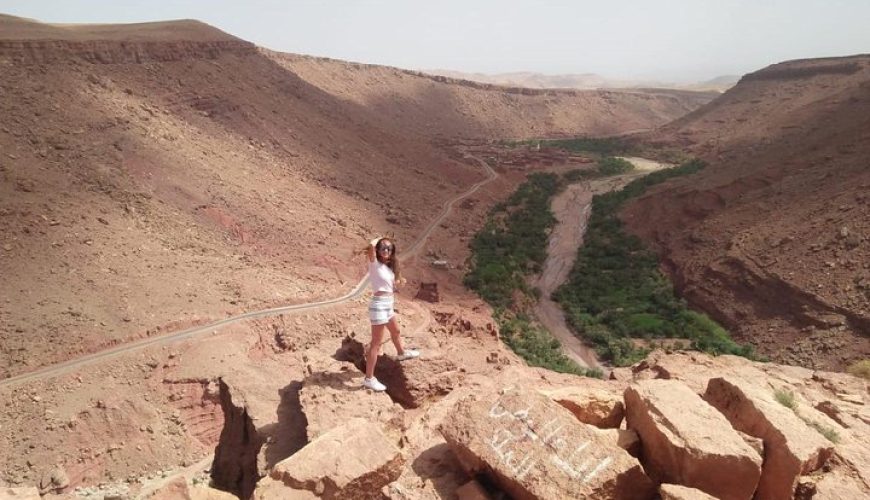What to Wear in Morocco in March?
What to Wear in Morocco in March: Your Ultimate Guide to Dressing Comfortably and Respectfully Planning a trip to Morocco in early spring and wondering what to wear in Morocco in March? Look no further. This guide will walk you through everything you need to know—climate considerations, region-by-region style tips, and essential packing advice. By the end of this article, you’ll feel confident choosing outfits that balance comfort, cultural respect, and style, ensuring a memorable Moroccan adventure. Why Packing Smart for Morocco in March Matters March in Morocco can bring a delightful mixture of mild sunny days, cool nights, and the occasional rainfall. Being prepared for these fluctuating temperatures will ensure you remain comfortable, whether you’re exploring the labyrinthine medinas or savoring mint tea on a rooftop terrace. Knowing what to wear in Morocco in March also allows you to respect local cultural norms—helping you blend in more seamlessly with your surroundings and enjoy a warmer welcome from residents. Key Takeaway: A well-planned wardrobe will help you adapt to Morocco’s varied climate zones and cultural expectations, making for a smoother, more enjoyable trip. Customize your Tour to Morocco General Climate Overview for March Morocco’s climate in March varies greatly depending on the region: Coastal Areas (e.g., Casablanca, Essaouira): Daytime temperatures often range between the low to mid-60s°F (15–18°C), with possible dips into the 50s°F (10–13°C) at night. Light layers and a windbreaker or warm sweater are advisable. Inland Cities (e.g., Marrakech, Fez): You’ll typically encounter highs in the 70s°F (21–24°C) and cooler nights that can drop into the 50s°F (10–13°C). Mountain Regions (e.g., Atlas Mountains): Elevations can still be cold, especially at night, with temperatures sometimes plunging below freezing. If you plan on trekking or staying in higher altitudes, pack warmer layers. Desert Regions (e.g., Sahara, Merzouga): Expect pleasantly warm days but cooler nights. Temperatures can range from the mid-70s°F (around 24°C) down into the low 50s°F (10–12°C) after sunset. 1. What to Wear in Marrakech in March Marrakech, often called the “Red City,” offers a vibrant fusion of history, modern amenities, and traditional Moroccan culture. When considering what to wear in Marrakech in March, think about pieces that can easily transition from day to night. Daytime Strolls and Souk Shopping Breathable Tops: Opt for lightweight cotton or linen shirts that provide coverage but allow airflow. Comfortable Bottoms: Loose-fitting trousers, maxi skirts, or knee-length dresses can help you stay cool without showing too much skin. Layer Up: Temperatures can climb in the afternoon sun, but dip quickly after sundown. A light cardigan or scarf is a good idea. Evening Outfits Long-Sleeved Layers: A thin sweater or lightweight jacket keeps you warm during cooler evenings. Dressier Options: For upscale dinners, a stylish blouse paired with relaxed-fit trousers or a midi skirt can feel both elegant and practical. Key Takeaway: In Marrakech, versatility is key—pack layers you can remove in warmer afternoons and add back as night falls. 2. What to Wear in Fez in March Fez is renowned for its sprawling ancient medina, a UNESCO World Heritage Site filled with hidden corners, ornate doors, and bustling markets. If you’re asking what to wear in Fez in March, keep in mind that Fez can be slightly cooler than Marrakech, especially early in the morning and late at night. Navigating Narrow Streets Layering Essentials: Start your day with a long-sleeved T-shirt or blouse under a light jacket or cardigan. As you explore the medina, you can remove layers if it warms up. Footwear: Fez’s winding lanes can be slippery or uneven, so closed-toe, comfortable shoes (like sneakers or flats with rubber soles) are advisable. Respectful Dress Modest Clothing: Fez is slightly more conservative, so plan to cover your shoulders and knees. Scarves: Keep a scarf in your day bag to drape over your shoulders if you feel underdressed or to fend off a sudden chill. 3. What to Wear in Chefchaouen in March Nestled in the Rif Mountains, Chefchaouen—famed for its iconic blue-washed buildings—offers cooler spring temperatures. If you’re wondering what to wear in Chefchaouen in March, be prepared for crisp air, particularly early in the day and after sunset. Dressing for Mountain Breezes Warm Outer Layer: A lightweight jacket or cozy sweater is essential for Chefchaouen’s cooler air, especially if you plan to wander in the early morning. Comfortable Walking Shoes: The city’s hilly terrain and cobblestone streets demand sturdy, reliable footwear—opt for sneakers or boots. Pops of Color: Embrace the city’s magical vibe with colorful scarves or shawls that stand out beautifully against the blue-hued walls. Modesty Meets Style Midi or Maxi Skirts: Feel free to play with flowy styles that look great in photos while still respecting cultural norms. Layered Tops: A long-sleeved top underneath a looser blouse can offer warmth without feeling bulky. Key Takeaway: Chefchaouen can be significantly cooler than coastal or desert regions, so plan accordingly with a mix of warm layers and comfortable footwear. Check some of our Best Tours in Morocco 15 Days Tour from Casablanca 5 (30 Reviews) Form $1.400,00 Featured Morocco Itinerary 14 Days | Ultimate Tour 5 (30 Reviews) Featured Form $1.350,00 10 Days Tour from Casablanca 5 (30 Reviews) Featured Form $900,00 4. What to Wear in the Desert in March If your journey includes the Sahara or other desert regions, you’ll want to strike a balance between daytime sun protection and nighttime warmth. What to wear in the Desert in March hinges on layering and light, breathable fabrics. Sun-Soaked Days Loose-Fit Clothing: Linen trousers, maxi skirts, and long-sleeved cotton tops protect against direct sunlight while staying breezy. Sun Protection: Bring a wide-brimmed hat, sunglasses, and sunscreen. A lightweight scarf can shield your face from sand and dust if the wind picks up. Chilly Evenings Warm Layers: Temperatures can drop quickly at night, so a fleece jacket or medium-weight sweater is crucial. Footwear: Closed-toe shoes or boots are best for desert excursions, especially if you plan on camel treks or exploring dunes on foot. Key Takeaway: Don’t underestimate how cold the desert
Unveiling the Magic of Morocco: Secrets of the Sahar
Unveiling the Magic of Morocco: Secrets of the Sahar The Sahara Desert is not just a destination; it’s an emotion, a timeless expanse that enchants travelers from around the globe. From the golden dunes of Erg Chebbi to the untamed beauty of Erg Chigaga, the secrets of the Sahara in Morocco offer an unparalleled experience. Whether you’re seeking luxury, adventure, or cultural immersion, the Sahara unveils something extraordinary for everyone. Why Explore the Sahara Desert? Breathtaking Landscapes The Sahara is home to some of the most mesmerizing landscapes in the world. Towering sand dunes, rocky plateaus, and expansive oases paint a picture of serene beauty that shifts with the sun’s movement. A Starry Night Like No Other Away from the city lights, the Sahara’s night sky is a celestial masterpiece. Stargazing in the desert offers a view of the Milky Way and countless constellations in their full glory. Timeless Adventures The Sahara offers countless activities that allow you to connect with the desert’s spirit, from camel treks to dune surfing. Top Sahara Experiences Luxury Desert Camps Indulge in the finest comforts amidst the wilderness. Luxury camps provide plush accommodations, gourmet meals, and private experiences like guided desert walks and cultural performances. Camel Treks at Sunrise or Sunset Traverse the dunes on the back of a camel, the “ships of the desert.” The shifting colors of the sands during sunrise or sunset make for a truly magical moment. Traditional Berber Villages Visit nearby Berber villages to gain insight into the lives and traditions of Morocco’s indigenous people. Their warm hospitality and rich culture add depth to your desert journey. Adrenaline-Pumping Activities For thrill-seekers, try sandboarding or quad biking across the vast expanse of golden dunes. These activities add excitement to the tranquility of the Sahara. Desert Cuisine Savor traditional Moroccan dishes such as tagines, fresh dates, and spiced teas prepared in authentic desert style. Many camps host intimate dinners under the stars. Best Time to Visit the Sahara To experience the Sahara at its best, plan your trip between October and April. The cooler months provide more comfortable weather for outdoor activities, while the evenings bring crisp air perfect for cozying up by a campfire.Booking Confirmation (More than 10 days for Sample) How to Reach the Secrets of the Sahara The most popular starting points for a Sahara adventure are: Marrakech: A gateway to the desert, offering a scenic drive through the Atlas Mountains. Fes: Ideal for travelers heading to Erg Chebbi. Ouarzazate: Known as the “Door of the Desert,” this town is a hub for tours and excursions. Exploring Morocco’s Secret Forests: A Journey Through Hidden Woodlands
Eco-Tourism in Morocco: Sustainable Travel Practices
Morocco is a country rich in natural beauty and cultural diversity, making it an ideal destination for eco-tourism. Eco-tourism emphasizes responsible travel to natural areas, conserving the environment, and improving the well-being of local communities. In this post, we will explore sustainable travel practices in Morocco and highlight some of the best eco-friendly destinations. The Importance of Sustainable Travel in Morocco Sustainable travel focuses on minimizing the negative impacts of tourism on the environment and local cultures. It encourages travelers to: Respect Local Cultures: Engaging with local customs and traditions helps preserve the unique identity of Moroccan communities. Reduce Environmental Impact: Choosing eco-friendly accommodations and transportation options contributes to conservation efforts. Support Local Economies: Buying locally-made products and services directly benefits the communities you visit. Eco-Friendly Travel Practices for Exploring Morocco When traveling in Morocco, consider adopting these sustainable practices: Choose Eco-Friendly Accommodations in Morocco: Look for hotels and lodges that follow sustainable practices, such as using renewable energy, recycling, and supporting local communities. Travel Off-Peak in Morocco: Visiting during the shoulder seasons helps reduce the strain on popular destinations, allowing for a more authentic experience. Use Public Transportation in Morocco: Opt for buses or shared taxis to reduce your carbon footprint and experience local life. Practice Responsible Wildlife Tourism in Morocco: If you participate in wildlife experiences, ensure they adhere to ethical guidelines that prioritize animal welfare and conservation. Must-Visit Eco-Friendly Destinations in Morocco Souss-Massa National Park: A Natural Haven Located near Agadir, Souss-Massa National Park is a haven for nature lovers. It is home to diverse wildlife, including endangered species, and offers beautiful landscapes ranging from beaches to wetlands. Activities in Souss-Massa National Park: Birdwatching, hiking, and guided nature tours. Sustainable Practices in Souss-Massa: The park promotes conservation and supports local communities through eco-tourism initiatives. Chefchaouen: The Blue Pearl of Eco-Tourism Known for its stunning blue-washed buildings, Chefchaouen is not only picturesque but also committed to sustainability. Activities in Chefchaouen: Explore the charming streets, hike in the nearby Rif Mountains, and shop for locally-made handicrafts. Sustainable Practices in Chefchaouen: The town encourages eco-friendly initiatives, including waste management and conservation projects. The High Atlas Mountains: Adventures in Nature The High Atlas region offers breathtaking landscapes and opportunities for eco-adventures. Activities in the High Atlas: Trekking, mountain biking, and visiting traditional Berber villages. Sustainable Practices in the High Atlas: Local guides promote responsible tourism, ensuring that the benefits of tourism support local communities. Essaouira: A Coastal Gem of Eco-Conscious Travel Essaouira is a UNESCO World Heritage site known for its rich history and commitment to sustainability. Activities in Essaouira: Windsurfing, exploring the medina, and enjoying fresh seafood. Sustainable Practices in Essaouira: The city promotes local artisans and sustainable fishing practices, helping to preserve its cultural heritage. Conclusion: Embrace Eco-Tourism in Morocco Eco-tourism in Morocco provides an opportunity for travelers to explore the country’s stunning landscapes while making a positive impact on the environment and local communities. By adopting sustainable travel practices and visiting eco-friendly destinations, you can enjoy a more meaningful travel experience. Call to Action Ready to explore the beauty of Morocco sustainably? Contact us today to plan your eco-friendly adventure and discover the wonders of this incredible country while supporting responsible tourism.
Morocco: Where Timeless Beauty Meets Unforgettable Adventures
Morocco: Where Timeless Beauty Meets Unforgettable Adventures Welcome to Morocco: A Land of Timeless Beauty, where ancient traditions meet breathtaking landscapes and modern adventures. Whether you’re exploring the bustling souks of Marrakech, the golden dunes of the Sahara, or the majestic Atlas Mountains, Morocco promises a journey filled with wonder and unforgettable memories. Discover the Charms of Morocco’s Cities Morocco’s cities are a tapestry of history and modernity, each with its own unique allure: Marrakech: Known as the “Red City,” Marrakech enchants with its lively souks, the breathtaking Majorelle Garden, and the iconic Jemaa el-Fnaa square. Fez: Home to the world’s oldest university, Fez is a maze of medieval streets, vibrant markets, and traditional craftsmanship. Casablanca: A blend of tradition and modernity, Casablanca showcases stunning Art Deco architecture and the majestic Hassan II Mosque. Breathtaking Landscapes Morocco’s diverse landscapes are nothing short of spectacular: The Sahara Desert: A sea of golden sand dunes perfect for camel trekking and stargazing. The Atlas Mountains: A hiker’s paradise, offering lush valleys, Berber villages, and panoramic views. Coastal Gems: The Atlantic coastline boasts charming towns like Essaouira, known for its relaxed vibe and fresh seafood. Want to know the best ways to explore these landscapes? Check out our post on http://moroccotraveil.co/blogs Immerse Yourself in Moroccan Culture Morocco’s cultural heritage is as diverse as its geography. Key highlights include: Traditional Souks: Vibrant markets filled with handmade goods, spices, and textiles. Cuisine: From fragrant tagines to sweet mint tea, Moroccan food is a treat for the senses. Music and Festivals: Experience the rhythms of gnawa music and vibrant celebrations like the Rose Festival in Kalaat M’Gouna. Tip: Don’t miss a visit to a local hammam for a rejuvenating cultural experience. For more cultural insights, see our post on Tours When to Visit Morocco Morocco is a year-round destination, but the best times to visit are: Spring (March to May): Ideal for exploring cities and nature with pleasant weather. Autumn (September to November): Perfect for desert adventures and hiking in the mountains. Practical Travel Tips Here are some tips to make the most of your Moroccan journey: Dress Modestly: Respect local customs, especially in rural areas. Learn Basic Arabic or French Phrases: It enhances your interactions with locals. Transportation: Use the country’s efficient trains for intercity travel and enjoy traditional calèches (horse-drawn carriages) for a unique city experience. Morocco is more than a destination—it’s a journey through time and culture. Whether you’re drawn to its bustling cities, serene deserts, or welcoming people, Morocco promises memories that will last a lifetime. Start planning your Moroccan adventure today!
Exploring Morocco’s Secret Forests: A Journey Through Hidden Woodlands
Exploring Morocco’s Secret Forests: A Journey Through Hidden Woodlands When people think of Morocco, they often picture golden deserts, bustling souks, and vibrant cities. But hidden within this diverse landscape are Morocco’s secret forests—lush, green retreats offering tranquility, adventure, and a unique glimpse into the country’s natural beauty. If you’re looking to escape the crowds and explore Secret Forests of Morocco’s untouched woodlands, these secret forests will take your breath away. The Cedar Forests of Ifrane National Park Tucked away in the Middle Atlas mountains, the cedar forests of Ifrane National Park are among the most enchanting places in Morocco. Towering cedar trees create a serene atmosphere perfect for hiking and wildlife spotting. Highlights: Spot Barbary apes, a rare primate species native to Morocco. Follow scenic trails that weave through dense cedar trees and sparkling streams. The Untouched Forests of Taza National Park Nestled at the foothills of the Rif Mountains, Taza National Park is a hidden gem combining lush forests and stunning caves. This peaceful spot is ideal for nature lovers who want a unique and secluded adventure. Highlights: Explore natural caves like Friouato, Morocco’s deepest cave. Marvel at oak and cork trees while enjoying the melodies of local birdlife. The Forest Trails of Paradise Valley Near the village of Immouzer lies Paradise Valley, a breathtaking haven of green forests one of the Secret Forests of Morocco , turquoise pools, and dramatic rock formations. Surrounded by woodlands, it’s a perfect escape for those looking to immerse themselves in nature. Highlights: Swim in natural pools surrounded by lush greenery. Hike through shaded forest paths with panoramic views of the valley. Plan Your Moroccan Adventure The Forests and Waterfalls of Akchour Secret Forests of Morocco of Akchour, near Chefchaouen in the Rif Mountains, are home to majestic waterfalls and serene hiking trails. Surrounded by pine trees and rushing water, it’s a paradise for trekkers and photographers. Highlights: Visit the iconic Akchour Waterfalls, a stunning natural wonder. Explore hiking trails that lead to hidden viewpoints and tranquil forest clearings. Morocco’s secret forests offer a side of the country that few travelers get to experience. Whether you’re trekking through the cedar groves of Ifrane, hiking in Akchour, or exploring the woodlands of Paradise Valley, these hidden gems provide a perfect blend of adventure and tranquility. Step off the beaten path and discover the lush, green heart of Morocco. About Us http://UNESCO: Intercontinental Biosphere Reserve of the Mediterranean
Top Traditional Moroccan Crafts You Must See
Explore Traditional Moroccan Crafts: A Journey into Morocco’s Heritage Introduction From pottery and textiles to intricate lanterns, traditional Moroccan crafts capture the spirit of Morocco’s artistic legacy. Exploring these crafts gives you a deeper understanding of the culture and creativity found throughout Morocco. For more ideas on where to go, visit our Morocco Travel Guide. The Artistry Behind Traditional Moroccan Pottery and Ceramics Description Traditional Moroccan pottery is one of the country’s most iconic crafts. Crafted in cities like Fez and Safi, Moroccan pottery combines bold colors with unique geometric designs that reflect the nation’s rich history. Furthermore, the use of vibrant patterns symbolizes the Moroccan spirit. Highlights Fez Blue: This distinctive blue glaze is a hallmark of pottery in Fez, making it a must-see for craft enthusiasts. Hand-Painted Patterns: Geometric and floral designs are carefully painted, creating pieces that are uniquely Moroccan. Where to Find Moroccan Pottery Fez and Safi are the best places to discover authentic Moroccan pottery. Check out our Cultural Tours in Morocco for a deeper experience. Traditional Moroccan Carpets and Rugs: A Heritage of Weaving Description Moroccan carpets and rugs are traditional crafts that hold cultural significance. Made by Berber artisans, these handwoven pieces showcase bold colors and intricate patterns, each reflecting a part of Morocco’s history. Highlights Beni Ourain Rugs: Known for their soft wool and neutral designs, these rugs are a symbol of comfort and elegance. Kilim Rugs: These colorful, geometric-patterned rugs add a lively touch to any Moroccan home. Where to Discover Moroccan Rugs For traditional Moroccan carpets, head to the Atlas Mountains or the souks of Marrakech. Learn more on our Moroccan Shopping Destinations page. Leatherwork from the Fez Tanneries: A Traditional Moroccan Craft Description Fez is renowned for its traditional leatherwork, with tanneries that have been in operation for centuries. These artisans use natural dyes and time-honored techniques, producing high-quality leather goods that are beloved by locals and visitors alike. Highlights Babouches (Moroccan Slippers): These brightly colored leather slippers are a popular souvenir. Natural Dyeing Process: The tanneries use saffron, henna, and other natural dyes to create vibrant colors. Where to Visit Visit the Fez tanneries to witness leather production firsthand. For more information, see our Historic Sites in Fez. The Beauty of Moroccan Metalwork and Lanterns: Crafting in Brass and Copper Description Moroccan metalwork, especially in brass and copper, is a traditional craft that adds a touch of Moroccan charm to any space. Artisans create intricately designed lanterns and tea sets, both of which are functional and decorative. Highlights Moroccan Lanterns: Known for casting beautiful patterns, these lanterns are a staple of Moroccan decor. Traditional Tea Sets: Moroccan tea sets are elaborately decorated and symbolize the importance of hospitality. Where to Find Metalwork Explore brass and copper work in the souks of Marrakech and Fez. Discover more in our Moroccan Souks Guide. Moroccan Textiles and Embroidery: Crafting with Color and Detail Description Textiles and embroidery are central to traditional Moroccan crafts. Artisans create beautiful pieces for home decor and traditional garments, such as kaftans and djellabas, using vibrant colors and intricate stitching. Highlights Traditional Garments: Kaftans and djellabas are decorated with elaborate embroidery and are worn during special occasions. Handwoven Textiles: Moroccan textiles are perfect for adding warmth and color to any interior. Where to Explore Moroccan Textiles Meknes and Rabat are known for high-quality textiles. Check out our Best Places to Visit in Morocco for more destinations. Conclusion Morocco’s crafts offer a journey into the country’s artistic heritage. Each craft, from pottery to leatherwork, showcases the dedication of artisans. To explore Morocco further, visit our full range of Morocco Travel Options and experience the beauty of traditional Moroccan crafts firsthand.
Explore Morocco’s Diverse Cuisine: Street Food to Fine Dining
How to Explore Morocco’s Diverse Cuisine: From Street Food to Fine Dining introduction Exploring Morocco’s diverse cuisine is an exciting culinary adventure. Morocco’s diverse cuisine is a culinary adventure. From the vibrant street food of Marrakech to the fine dining of Casablanca, the flavors reflect its rich culture. You can sample traditional dishes from local vendors or enjoy gourmet meals at high-end restaurants. Morocco truly offers an unforgettable culinary experience. Street Food in Morocco: A Flavorful Exploration When you explore Morocco’s diverse cuisine, street food is a must-try. From Marrakech to Fes, stalls line the streets, offering a wide array of dishes bursting with flavor. One of the most iconic dishes is Marrakech’s famous snails, often served in a flavorful broth. You’ll also find sizzling kebabs and harira (a hearty soup). These street-side snacks give you a true taste of Moroccan life and are perfect for anyone on the go. To learn more about street food experiences in Morocco, visit Morocco Camel Trekking. Traditional Moroccan Dishes: A Taste of Authentic Heritage Moroccan food is deeply rooted in the country’s rich cultural history. Traditional dishes, such as tagine (a slow-cooked stew), couscous, and pastilla (a savory pastry), for example, form the backbone of Moroccan cuisine. In addition, these dishes showcase the rich flavors that define the country’s culinary identity. These dishes are made using fresh local ingredients like lamb, chicken, vegetables, and an array of aromatic spices like saffron, cumin, and cinnamon. Couscous is a staple Moroccan dish made from small steamed balls of semolina wheat, often served with meat, vegetables, and flavorful sauces. Pastilla is a savory Moroccan pie made with a flaky phyllo-like dough and typically filled with minced pigeon or chicken, eggs, and aromatic spices. Street food in Morocco offers a vibrant and flavorful exploration, with offerings like kebabs, tagines, harira soup, and sweet treats like honeyed pastries and fresh fruit juices. One of the best places to explore these dishes is at local restaurants, where you can enjoy tender lamb tagine cooked with prunes or olives. For more insights into traditional dishes, check out Perfect Morocco Tours. Fine Dining in Morocco: A Luxurious Culinary Experience For those looking to enjoy a more refined culinary experience, Morocco boasts an impressive fine dining scene. Cities like Casablanca and Marrakesh are home to world-class restaurants that blend traditional Moroccan flavors with modern techniques. Many of these restaurants offer sumptuous multi-course meals, prepared by expert chefs. If you’re seeking an upscale dining experience, head to a luxurious restaurant offering dishes like royal couscous or grilled seafood, along with an impressive selection of Moroccan wines. You can discover more about Morocco’s fine dining scene at Morocco Travel. Moroccan Sweets and Desserts: A Sweet Ending to Every Meal No Moroccan meal is complete without a sweet treat. Moroccan sweets are a delightful way to end a meal, with pastries and cakes that showcase the country’s unique flavors. Baklava, chebakia, and kaab el ghazal (a delicate almond pastry) are just a few examples of the sweet creations you can try. Pair these desserts with a cup of Moroccan mint tea for a truly authentic experience. To dive deeper into the world of Moroccan desserts, visit Traveling Morocco. Conclusion Exploring Morocco’s diverse cuisine is a thrilling journey for anyone who loves food. From the bustling street food markets to the elegant fine dining experiences, Morocco offers something for every palate. Whether you’re sampling traditional dishes like tagine and couscous or savoring sweet pastries, you’ll find a blend of flavors that are truly one-of-a-kind. To make the most of your culinary exploration, be sure to visit local food markets, try dishes from street vendors, and experience the fine dining scene in Morocco’s top cities. And don’t forget to pair your meal with a glass of mint tea or Moroccan wine for the complete experience. For more information on Moroccan cuisine and travel tips, check out Morocco Travel.
Fes Medina Guide: History, Culture, and Shopping in Morocco
Fes Medina Guide: History, Culture, and Shopping in Morocco Introduction The Fes Medina Guide is an essential resource for anyone visiting this historic and culturally rich area of Morocco. With its labyrinthine streets, ancient architecture, and vibrant marketplaces, the Fes Medina is one of the most iconic locations in the country. In this guide, we’ll explore its fascinating history, the unique cultural experiences that define it, and the best places to shop for authentic Moroccan treasures. Whether you’re a history buff, a culture seeker, or a shopaholic, the Fes Medina offers something for everyone. The History of Fes Medina The Origins of Fes Medina Fes was founded in the 9th century, and it is one of Morocco’s oldest and most significant cities. The Medina, with its maze-like streets and preserved architecture, provides a window into Morocco’s past. Fes holds an important place in the development of the Arab world. Additionally, it was a center for knowledge, with the Al Quaraouiyine University in Fes recognized as the oldest continuously operating university in the world. Key Historical Landmarks Bab Boujloud Gate: Known as the “Blue Gate,” it’s one of Fes’ most iconic landmarks. Al Quaraouiyine University: This university holds great historical significance. Therefore, it is a must-see when in Fes. You can read more about other historic sites in Morocco in this detailed guide. The Vibrant Culture of Fes Medina A Glimpse into Traditional Moroccan Life The Fes Medina Guide is not just about history—it’s also about experiencing Morocco’s rich cultural traditions. The Medina is a living, breathing showcase of Morocco’s artistic heritage. In fact, artisans continue to create stunning works using techniques passed down through generations. Traditional Moroccan Crafts Leather Goods: One of the highlights of Fes is the Chouara Tannery. Here, you can witness the production of beautiful leather products. Ceramics and Pottery: Fes is famous for its vibrant pottery. Moreover, you can visit the workshops to see artisans create intricate pieces. Culinary Delights Moroccan cuisine is a blend of diverse flavors. Consequently, Fes is the perfect place to try dishes like tagine, couscous, and pastilla. Street food stalls and local restaurants serve a delicious variety. These dishes reflect the city’s rich culinary heritage. If you’re interested in culinary tours, check out options at Perfect Morocco Tours. Shopping in Fes Medina The Heart of Shopping in Fes Shopping in the Fes Medina is an unforgettable experience. From souks full of spices to shops selling hand-woven textiles, the Medina offers a wide range of unique products. Souks and Markets: Wander through the souks where you’ll find spices, jewelry, fabrics, and much more. The markets are divided into sections, with each area dedicated to specific products. Best Souk for Leather Goods: The Chouara Leather Souk is the place to be for beautiful leather goods, from bags to shoes. Tips for Shopping in Fes When shopping in the Medina, always remember to haggle. In addition, it’s part of the experience. Bargaining is expected in most shops and souks. For more tips on shopping in Morocco, visit Traveling Morocco. How to Navigate the Fes Medina The Fes Medina can be overwhelming at first. Its narrow streets and winding alleys are part of its charm. However, you’ll discover hidden treasures and beautiful corners around every turn. Hiring a Guide A local guide is a great way to experience Fes. Not only will they help you navigate the maze-like streets, but they will also provide historical context to the sites you visit. Where to Stay Near Fes Medina Fes offers various accommodations. From luxurious hotels to charming riads, you have plenty of options. Staying close to the Medina gives you easy access to all the attractions within it. Riad Fes: A beautiful traditional riad offering luxury and proximity to the Medina. Palais Faraj: If you want high-end accommodation, this hotel offers incredible views of the Medina and modern amenities. For more options, you can explore Morocco Travel for the best stays. Conclusion The Fes Medina Guide is a perfect way to explore one of Morocco’s most iconic destinations. From its rich history to its vibrant culture and unique shopping experiences, the Medina offers something for every type of traveler. Whether you’re exploring ancient monuments, learning about traditional craftsmanship, or shopping for unique goods, the Fes Medina will leave you with lasting memories.
Imilchil Marriage Festival’s Date and Things to discover
Discover the Imilchil Marriage Festival: A Unique Celebration in the High Atlas Mountains Nestled in the majestic High Atlas Mountains, the Imilchil Marriage Festival offers a one-of-a-kind celebration of love and Berber heritage. Each year, the village of Imilchil transforms into a vibrant hub of cultural festivities. Tribes from across the region gather to honor ancient customs. Notably, the festival is renowned for its traditional mass weddings, where couples unite in a joyful display of Berber unity. Additionally, visitors gain authentic insights into Berber life through music, dance, handicrafts, and cultural competitions. If you’re seeking a festival that beautifully blends romance and tradition, look no further than the Imilchil Marriage Festival. Below is a complete guide to this captivating event. When to Experience the Imilchil Marriage Festival The Imilchil Marriage Festival, also known as the “Betrothal Festival” or “Moussem of Imilchil,” occurs every September. While specific dates vary slightly based on the lunar calendar, it generally takes place during the second or third week of the month. Over the course of three vibrant days, the festival attracts both locals and tourists eager to witness the grandeur of Berber traditions in this remote region. Planning Tip: If you want to experience this festival, make sure to plan ahead! Since the dates may shift, it’s wise to check local announcements or consult tour operators for the latest information. What to Expect at the Festival: A Glimpse into Berber Traditions The Imilchil Marriage Festival offers more than just weddings; it is a vibrant celebration of Berber culture, rich in folklore and community spirit. Here’s a closer look at what awaits you during this unique cultural event: The Heart of the Festival: Mass Weddings At the festival’s core are the mass wedding ceremonies. Couples, primarily from the Aït Hadiddou tribe, come together to solemnize their unions in a traditional Berber style. This practice, deeply rooted in local folklore, symbolizes love and community. Legend has it that the festival originated from a tale of star-crossed lovers from rival tribes who were forbidden to marry. In their honor, the festival now serves as a gathering for couples to marry and renew their vows. The sight of multiple couples in colorful traditional attire, exchanging vows against the stunning backdrop of the High Atlas Mountains, creates memories that will linger long after your visit. Immerse Yourself in Traditional Music and Dance Throughout the festival, you will enjoy a rich array of Berber music and dance performances. The rhythmic drumming and lively ahidus dances create an infectious energy that spreads joy throughout the gathering. Importantly, these musical traditions have been passed down through generations, making your experience all the more special. Whether you’re tapping your foot or joining in the dance, the music of Imilchil is an essential part of the festival experience. Discover Local Handicrafts and Souvenir Shopping A vibrant local market springs to life during the festival. Stalls overflow with Berber handicrafts, rugs, pottery, jewelry, and traditional clothing. This presents a unique opportunity to take home authentic Moroccan souvenirs while supporting local artisans. Shopping Tip: Remember to bargain respectfully, as it’s part of the local culture. Don’t miss the chance to pick up handcrafted rugs or jewelry as wonderful keepsakes. Adventure Awaits: Camel Races and Cultural Competitions For those seeking adventure, the festival features camel races, horse riding, and other competitive events that showcase traditional Berber skills. These activities infuse spirited energy into the festival, with participants proudly demonstrating their riding abilities. Watching a camel race through the mountainous terrain provides thrilling insights into Berber traditions. Additionally, competitions extend to traditional games, offering entertaining spectacles for both visitors and locals alike. A Cultural Exchange in Imilchil The Imilchil Marriage Festival is a melting pot of cultures, drawing visitors from around the globe. This creates a lively atmosphere of cultural exchange. Whether you’re striking up conversations with locals, learning about their customs, or simply observing the rich tapestry of Berber life, the festival provides a window into a way of life that has remained largely unchanged for centuries. Expect warm hospitality and friendly encounters that deepen your understanding of Morocco’s Berber culture. Essential Tips for Attending the Imilchil Marriage Festival To maximize your experience at the Imilchil Marriage Festival, some planning is necessary due to its remote location. Here are practical tips to help you enjoy this unique event: Accommodation Options Near Imilchil: Given that Imilchil is a small village, accommodations are limited. Booking early is crucial to secure a spot in local guesthouses. Alternatively, consider camping near the festival grounds for a more immersive experience. Traveling to Imilchil: The village is located about 4-5 hours by car from major cities like Marrakech or Fes. Renting a car is often the most convenient option; however, guided tours are also available. Prepare for a scenic yet winding journey through the Atlas Mountains. Respecting Local Customs and Traditions: As with any cultural event, respecting local traditions is vital. Dress modestly, ask for permission before photographing people, and be mindful of local sensitivities while participating in or observing the festival. Join the Celebration: An Unforgettable Experience The Imilchil Marriage Festival offers a rare glimpse into the heart of Moroccan Berber culture. With its unique mix of romance, tradition, and festivity, it promises an unforgettable experience for travelers eager to explore Morocco’s rich cultural heritage. From mass weddings to cultural performances, this festival celebrates love, life, and community like no other. If you’re planning a trip to Morocco in September, make sure to include the Imilchil Marriage Festival in your itinerary. It’s a cultural journey unlike any other, allowing you to immerse yourself in the timeless traditions of the Berber people.
A Road Trip Across Morocco: Discovering Diverse Landscapes
A Road Trip Across Morocco Morocco, with its rich history, diverse landscapes, and vibrant culture, offers an unforgettable adventure. Whether you’re a seasoned traveler or a first-timer, a road trip here reveals stunning sights, from the Sahara Desert’s dunes to the lush valleys of the High Atlas Mountains. Let’s dive into this journey and explore the wonders that await on the roads of Morocco. Starting Point: The Bustling City of Casablanca Your Moroccan road trip begins in Casablanca, the country’s largest city and commercial hub. Though it may not have the ancient charm of Fes or Marrakech, Casablanca offers a unique mix of modernity and tradition. Start by visiting the Hassan II Mosque, one of the world’s largest. Non-Muslims can visit this architectural marvel outside prayer times, making it a great introduction to Morocco’s blend of old and new. After Casablanca, head towards Rabat, Morocco’s capital. The coastal scenery provides a refreshing contrast to Casablanca’s urban landscape. In Rabat, explore the Kasbah of the Udayas, a historic fortress overlooking the Atlantic, and the 12th-century unfinished Hassan Tower. Rabat’s peaceful atmosphere and historical significance make it a perfect stop on your Moroccan road trip. Into the Imperial Cities: Fes and Meknes From Rabat, continue inland to the imperial cities of Meknes and Fes, two of Morocco’s most historically rich destinations. Meknes, often overlooked compared to its neighbors, offers a quieter atmosphere with fewer tourists. Visit iconic landmarks like the Bab Mansour gate and the Mausoleum of Moulay Ismail. Next, drive to Fes, Morocco’s cultural and spiritual center. Fes feels frozen in time, with the Fes el-Bali (Old City) as a UNESCO World Heritage site. Its medieval architecture, bustling souks, and historic madrasas make it unforgettable. Stroll through the medina’s narrow alleys, where artisans still practice traditional crafts like leather tanning and pottery. Be sure to visit the University of Al Quaraouiyine, the world’s oldest continuously operating university. Crossing the Middle Atlas: Ifrane and the Cedar Forests Leaving the ancient cities behind, your road trip takes you through the stunning Middle Atlas Mountains. Your first stop is Ifrane, known as the “Switzerland of Morocco” for its European-style architecture and cool climate. This charming town offers a refreshing contrast to Morocco’s typical arid landscapes and is perfect for a peaceful break. Continue driving through the cedar forests of the Middle Atlas, where you might spot Barbary macaques, native to the region. The winding mountain roads provide breathtaking views at every turn, making the journey itself an unforgettable experience. The Road to the Sahara: Merzouga and the Erg Chebbi Dunes As you descend from the Middle Atlas, the landscape shifts dramatically. Lush forests give way to the arid plains of the Sahara Desert, one of the world’s most iconic landscapes. Your destination is Merzouga, a small town on the edge of the Erg Chebbi Dunes. Merzouga offers one of Morocco’s most unforgettable experiences: a camel trek into the Sahara. As you ride through the golden dunes, the vastness and silence of the desert surround you. Spend the night in a traditional Berber camp, enjoying a starry sky and the rhythmic sounds of Berber music by the campfire. The sunrise over the dunes the next morning will be a memory that lasts forever. The Valley of a Thousand Kasbahs: Dades and Todra Gorges After your desert adventure, the road takes you to the Dades and Todra Gorges, two of Morocco’s most breathtaking natural wonders. The Dades Gorge, with its winding roads and dramatic rock formations, is known as the “Valley of a Thousand Kasbahs” due to the many ancient fortresses along the way. Stop to explore these historical sites and enjoy the stunning scenery. The Todra Gorge is just as impressive, with towering cliffs rising over 300 meters on either side of a narrow canyon. While it’s a favorite for rock climbers, the sheer scale of the gorge is awe-inspiring for any visitor. The road through these gorges offers some of Morocco’s most scenic drives, with plenty of chances to stop and admire the views. Over the High Atlas Mountains: Ait Benhaddou and Ouarzazate From the gorges, your journey continues over the High Atlas Mountains, where you’ll face some of the most challenging yet rewarding roads of the trip. The Tizin’Tichka pass, at 2,260 meters, offers breathtaking views of the surrounding mountains and valleys. While the drive is daunting, the stunning scenery makes it worth every sharp turn. Next, visit Ait Benhaddou, a UNESCO World Heritage site and one of Morocco’s most iconic kasbahs. This ancient fortified village has served as a backdrop for films like Gladiator and Game of Thrones. Explore the maze of mud-brick buildings and imagine life here centuries ago. Finally, arrive in Ouarzazate, the “Gateway to the Sahara” and “Hollywood of Morocco.” Visit the Atlas Film Studios, where many famous movies were filmed, and explore the town’s mix of modern and traditional architecture, along with its vibrant markets. The Journey Ends: Marrakech and Beyond Your road trip ends in Marrakech, one of Morocco’s most vibrant cities. The city overwhelms the senses with its bustling medina, colorful souks, and historic palaces. Visit Jemaa el-Fnaa square for street performers, food stalls, and market vendors. Explore Bahia Palace, Majorelle Garden, and soak in the city’s rich history and culture. If time permits, extend your trip to the coastal town of Essaouira or the blue-painted village of Chefchaouen. Both offer a relaxing end to your Moroccan adventure, with laid-back atmospheres and stunning scenery. Conclusion: The Ultimate Moroccan Road Trip A Moroccan road trip is more than just traveling from point A to point B. It’s an exploration of a country rich in history, culture, and natural beauty. From bustling cities to tranquil deserts, and from towering mountains to endless coastlines, Morocco offers incredible diversity in landscapes and experiences. So, pack your bags, hit the road, and discover the magic of Morocco. This guide helps you plan the ultimate adventure, whether you’re looking for historical landmarks, natural wonders, or cultural experiences. Stay flexible and open


